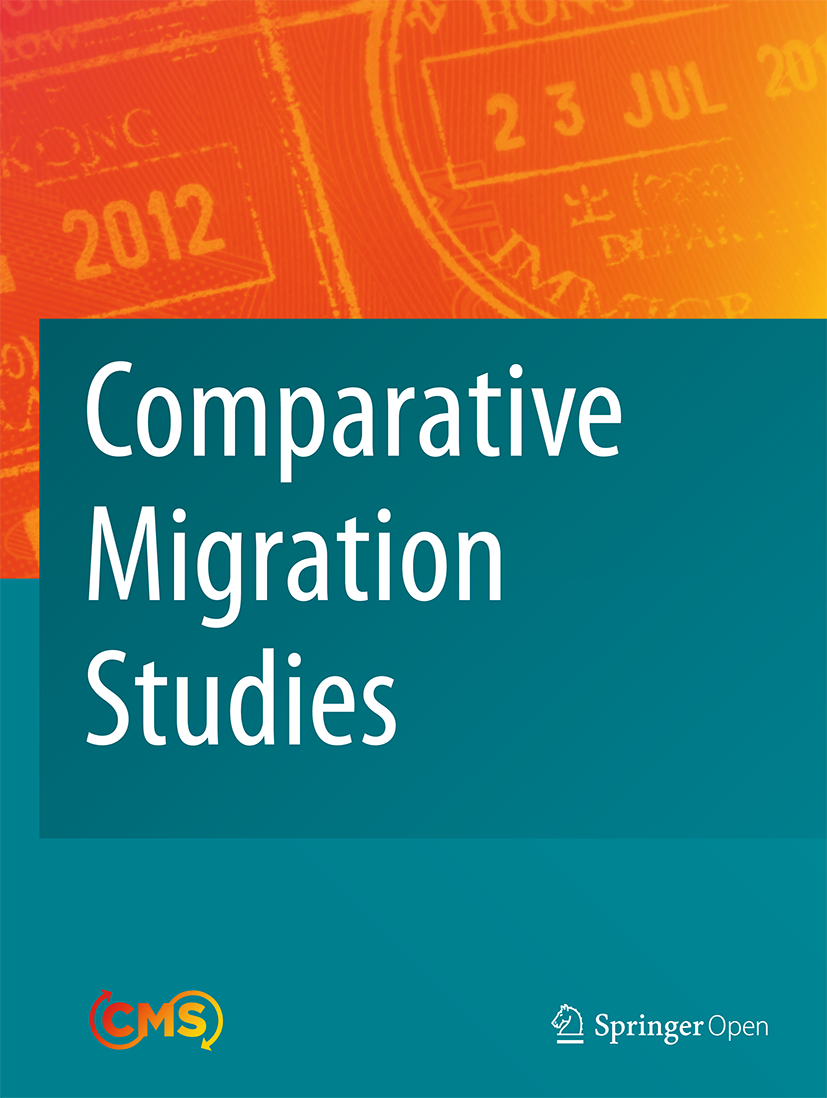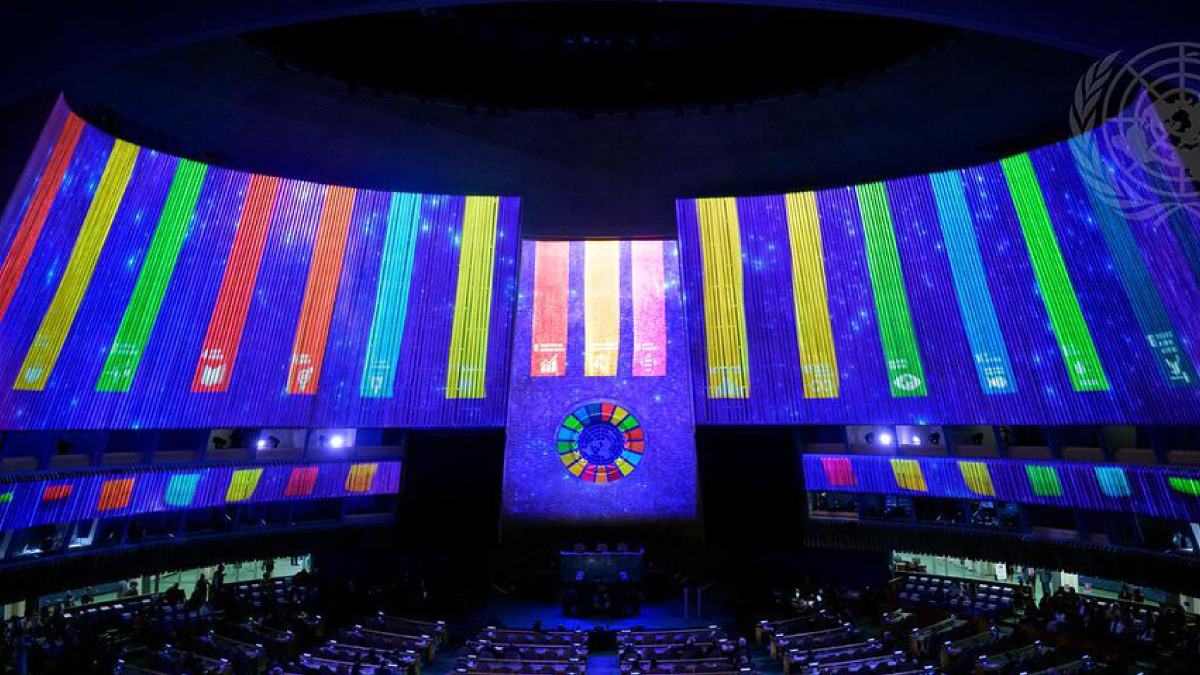Regular vs. irregular migration from Indian Punjab: evaluating socio-economic contexts, economic gains and developmental effects – SpringerOpen

Global Migration Dynamics and the Sustainable Development Goals
Drivers of International Migration in the Context of the 2030 Agenda
International migration is a multifaceted phenomenon shaped by drivers that directly intersect with several Sustainable Development Goals (SDGs). These drivers create complex pressures that compel both voluntary and forced movement across borders.
- Economic Imbalances and Lack of Decent Work (SDG 8, SDG 10): Disparities in economic opportunities and the demand for labor in destination countries are primary drivers. Migration is often a strategy to escape poverty (SDG 1) and seek decent work and economic growth (SDG 8).
- Conflict and Instability (SDG 16): The absence of peace, justice, and strong institutions (SDG 16) forces individuals to flee their homes in search of safety and security.
- Climate Change (SDG 13): The escalating effects of climate change, as targeted by SDG 13, are increasingly recognized as a significant driver of displacement and migration.
- Globalization and Technology: Advances in communication and transportation facilitate mobility, connecting potential migrants with opportunities abroad.
Statistical Overview and Contribution to Sustainable Development
The scale of international migration highlights its importance in achieving the SDGs. By 2020, the global number of international migrants reached 281 million, representing 3.6% of the world’s population. This mobility contributes significantly to both source and destination countries.
- Economic Growth and Remittances (SDG 1, SDG 8, SDG 10): Migrants meet labor demands, fostering economic growth (SDG 8). International remittances surged from US$128 billion in 2000 to US$702 billion in 2022, providing a critical lifeline for families in developing nations, directly contributing to poverty reduction (SDG 1) and reducing inequalities (SDG 10). The facilitation of these flows aligns with SDG Target 10.c, which aims to reduce remittance transaction costs.
Regional Trends and Destination Countries
Migration patterns show a concentration of migrants in specific regions and high-income countries, underscoring the global inequalities addressed by SDG 10.
- Europe: 87 million international migrants
- Northern America: 59 million international migrants
- Northern Africa and Western Asia: 50 million international migrants
Approximately two-thirds of all international migrants reside in just 20 countries, with the United States (51 million), Germany (16 million), and Saudi Arabia (13 million) hosting the largest populations. The fact that 69% of international migrants live in high-income countries reflects the global pursuit of opportunities linked to SDG 8.
Irregular Migration: A Challenge to Safe and Orderly Pathways (SDG 10.7)
Conceptual Framework and Global Scale
Irregular migration, which involves movement outside of regular legal channels, poses a significant challenge to the international community’s goal of facilitating orderly, safe, regular, and responsible migration (SDG Target 10.7). The term “irregular” is preferred over “illegal” to avoid criminalizing migrants and to acknowledge the complex structural factors compelling such journeys. Irregular migrants are estimated to constitute 15-20% of the global migrant population (30 to 40 million people), with higher concentrations in parts of Asia and Africa.
Systemic Causes and Policy Failures
Irregular migration is often a response to systemic failures rather than individual choice. These causes undermine progress towards multiple SDGs.
- Exclusionary Policies: Restrictive visa systems and a mismatch between labor demand and legal migration pathways compel individuals to seek alternative routes.
- Neoliberal Globalization: The free flow of capital and goods without corresponding freedom of labor mobility creates structural pressures for irregular movement.
- Ineffective Enforcement: Strict immigration policies, such as border controls and deportations, often fail to address the root causes of migration. Instead, they can increase risks, costs, and exploitation, undermining SDG 8.8 (Protect labour rights) and SDG 16.2 (End abuse, exploitation, trafficking).
A rights-based, inclusive approach, supported by global governance, is essential for creating humane and effective migration systems that align with the 2030 Agenda.
Case Study: International Migration from Punjab, India, and its SDG Implications
National Context: India’s Role in Global Migration
India is a major contributor to global migration flows and a key recipient of remittances, linking its development trajectory to global mobility patterns.
- Diaspora and Remittances: With the world’s largest diaspora of approximately 35.42 million people, India is also the largest receiver of remittances ($89.12 billion in 2021-22). These financial inflows are crucial for achieving national development priorities, including SDG 1 (No Poverty) and SDG 8 (Decent Work and Economic Growth).
- Source of Regular and Irregular Migration: India is a source of both regular and irregular migrants, with states like Punjab, Andhra Pradesh, Tamil Nadu, and Kerala being significant contributors. This duality presents challenges for ensuring that migration is safe and orderly, as envisioned in SDG 10.7.
The Punjab Context: Historical and Contemporary Drivers
The state of Punjab has a long history of migration, driven by factors that reflect key development challenges.
- Agrarian Crisis (SDG 2): An ongoing crisis in the agricultural sector, a traditional source of livelihood, pushes many to seek opportunities elsewhere.
- Youth Unemployment (SDG 8): A lack of decent work and employment opportunities for the youth is a significant push factor.
- Desire for Better Opportunities: The pursuit of higher wages and better governance in developed nations motivates many to migrate.
These pressures have led to the emergence of a significant irregular migration industry alongside established regular pathways.
Socio-Economic Impacts and Development Outcomes
Migration from Punjab has profound and mixed impacts on the region’s progress towards the SDGs.
- Positive Impacts: Remittances significantly improve the financial status of households (SDG 1), leading to investments in housing, education (SDG 4), and loan repayment. In some cases, it has led to increased agency and empowerment for women left behind (SDG 5).
- Negative Impacts: The migration of skilled individuals results in a “brain drain,” particularly affecting the health sector (SDG 3) and overall human capital. Migrants, even skilled ones, often face underemployment abroad, failing to realize their full potential (SDG 8). The phenomenon also leads to demographic imbalances and capital drain from rural areas.
The Challenge of Irregular Migration from Punjab
Irregular migration from Punjab is a high-cost, high-risk endeavor, often chosen when legal channels are inaccessible. This practice directly contravenes the principles of safe migration and decent work.
- Contributing Factors: Low levels of human capital, corruption, lack of access to legal channels, and a powerful “migration industry” contribute to the prevalence of irregular routes.
- Risks and Exploitation: Migrants face grave exploitation, marginalization, and suffering, highlighting a failure to protect labor rights (SDG 8.8) and prevent exploitation (SDG 16.2).
A comparative analysis of regular and irregular migration is necessary to formulate policies that enhance the developmental benefits of regular migration while regulating irregular flows to protect vulnerable individuals and advance the Sustainable Development Goals.
Analysis of Sustainable Development Goals in the Article
1. Which SDGs are addressed or connected to the issues highlighted in the article?
-
SDG 8: Decent Work and Economic Growth
- The article connects international migration directly to economic factors, stating that migrants meet “labour demand in the destination countries” and support “national growth in both source and destination countries.” It discusses migration as a response to “income incentives” and a family strategy to “increase income.” The exploitation of irregular migrants, who are vulnerable in informal labor markets, also relates to the goal of decent work for all.
-
SDG 10: Reduced Inequalities
- This is the most central SDG in the article. The text explicitly states that international migration is influenced by “global inequalities.” It extensively discusses the need for well-managed migration policies by contrasting “regular” and “irregular” migration, which directly aligns with facilitating safe and orderly migration. The significant role of remittances in the economies of source countries, such as India, is also a key theme related to reducing inequalities.
-
SDG 16: Peace, Justice and Strong Institutions
- The article identifies “conflict” and “instability” as primary drivers of migration. It mentions displacement from conflict zones like Ukraine and Syria. Furthermore, the discussion on irregular migration, smuggling networks, and the failure of restrictive state policies to address root causes touches upon issues of governance, rule of law, and the protection of vulnerable populations.
-
SDG 13: Climate Action
- The article explicitly mentions the “escalating effects of climate change” and “climate stress” as significant drivers of contemporary migration, linking environmental degradation directly to human mobility.
-
SDG 5: Gender Equality
- The article notes the gender dimension of migration, stating that women “made up nearly half of the global migrant population.” It also examines the impact of migration on women left behind in Punjab, discussing how remittances can lead to “women empowerment” and “heightened self-confidence” but also how women can remain “constrained by social and familial norms of patriarchy.”
2. What specific targets under those SDGs can be identified based on the article’s content?
-
Under SDG 8: Decent Work and Economic Growth
- Target 8.8: “Protect labour rights and promote safe and secure working environments for all workers, including migrant workers…” This target is relevant to the article’s discussion of the “grave exploitation of migrants, particularly in situations when recruiting agencies brought the migrants illegally.” The text also highlights how restrictive policies increase risks and create “exploitative conditions” for irregular migrants.
-
Under SDG 10: Reduced Inequalities
- Target 10.7: “Facilitate orderly, safe, regular and responsible migration and mobility of people, including through the implementation of planned and well-managed migration policies.” The entire article is framed around the distinction between regular and irregular migration. It discusses how “exclusionary visa systems” and restrictive policies lead to irregular migration and argues that policies adapted to labor market needs can “greatly lower irregular migration and protect human rights.”
- Target 10.c: “By 2030, reduce to less than 3 per cent the transaction costs of migrant remittances and eliminate remittance corridors with costs higher than 5 per cent.” While the article does not mention transaction costs, it provides extensive data on the massive volume of remittances (“surged from US$ 128 billion in 2000 to US $ 702 billion in 2022”), highlighting the economic significance of these financial flows and the importance of this target.
-
Under SDG 16: Peace, Justice and Strong Institutions
- Target 16.1: “Significantly reduce all forms of violence and related death rates everywhere.” This is indirectly addressed by the mention of “conflict in Ukraine and Syria” as a strong driver of forced migration and displacement.
3. Are there any indicators mentioned or implied in the article that can be used to measure progress towards the identified targets?
-
For Target 10.7 (Orderly, safe, regular and responsible migration):
- Quantitative Indicators: The article provides several statistics that can be used as indicators:
- The total number of international migrants worldwide (281 million in 2020).
- The proportion of irregular migrants (estimated at 15-20% of migrants worldwide, or 30 to 40 million people).
- The number of youth from Punjab attempting irregular migration to Europe annually (over 20,000).
- Qualitative Indicators: The article’s discussion of “planned and well-managed migration policies” serves as a qualitative indicator. It contrasts “restrictive border restrictions” with a “rights-based and inclusive approach” that aligns policies with labor market needs, which can be used to assess the quality and effectiveness of national migration policies.
- Quantitative Indicators: The article provides several statistics that can be used as indicators:
-
For Target 10.c (Remittance costs):
- Quantitative Indicators: The article provides direct data on the volume of remittances, which is part of the official indicator (Indicator 10.c.1: Remittance costs as a proportion of the amount remitted). Specific figures include:
- Global international remittances: US$ 702 billion in 2022.
- Remittances to India: $78.6 billion in 2018 and $89.12 billion in 2021–22.
- Quantitative Indicators: The article provides direct data on the volume of remittances, which is part of the official indicator (Indicator 10.c.1: Remittance costs as a proportion of the amount remitted). Specific figures include:
-
For Target 8.8 (Protect labour rights):
- Qualitative Indicators: The article implies indicators related to the safety and rights of migrant workers through its descriptions of their vulnerability. The mention of “grave exploitation of migrants,” “smuggling networks,” and migrants facing “underemployment, devaluation of qualifications, and downward mobility” are qualitative measures of the failure to protect migrant labor rights.
-
For SDG 5 (Gender Equality):
- Quantitative Indicator: The statistic that women “made up nearly half of the global migrant population” is a direct indicator of the proportion of women among international migrants.
- Qualitative Indicator: The analysis of the “positive impact of remittances on the women empowerment” and “heightened self-confidence among women” left behind in Punjab serves as a qualitative indicator for measuring the socio-economic empowerment of women in migrant-sending households.
4. Table of SDGs, Targets, and Indicators
| SDGs | Targets | Indicators Identified in the Article |
|---|---|---|
| SDG 8: Decent Work and Economic Growth | Target 8.8: Protect labour rights and promote safe and secure working environments for all workers, including migrant workers… | Qualitative evidence of “grave exploitation of migrants” brought illegally; discussion of exploitative conditions and smuggling networks faced by irregular migrants. |
| SDG 10: Reduced Inequalities | Target 10.7: Facilitate orderly, safe, regular and responsible migration and mobility of people… |
|
| Target 10.c: Reduce transaction costs of migrant remittances… |
|
|
| SDG 16: Peace, Justice and Strong Institutions | Target 16.1: Significantly reduce all forms of violence and related death rates everywhere. | Mention of displacement caused by conflict in Ukraine and Syria as a driver of forced migration. |
| SDG 13: Climate Action | (Implied) Targets related to addressing drivers of climate-induced migration. | Mention of “escalating effects of climate change” and “climate stress” as drivers of migration. |
| SDG 5: Gender Equality | (Implied) Targets related to the economic empowerment and participation of women. |
|
Source: comparativemigrationstudies.springeropen.com
What is Your Reaction?
 Like
0
Like
0
 Dislike
0
Dislike
0
 Love
0
Love
0
 Funny
0
Funny
0
 Angry
0
Angry
0
 Sad
0
Sad
0
 Wow
0
Wow
0


















































.jpg.webp?itok=0ZsAnae9#)



/environment-climate-change-and-health-(ech)/water-sanitation-hygiene-and-health-(wsh)/landfill-tuvalu-36092.tmb-1200v.jpg?sfvrsn=5c21fe40_1#)



















